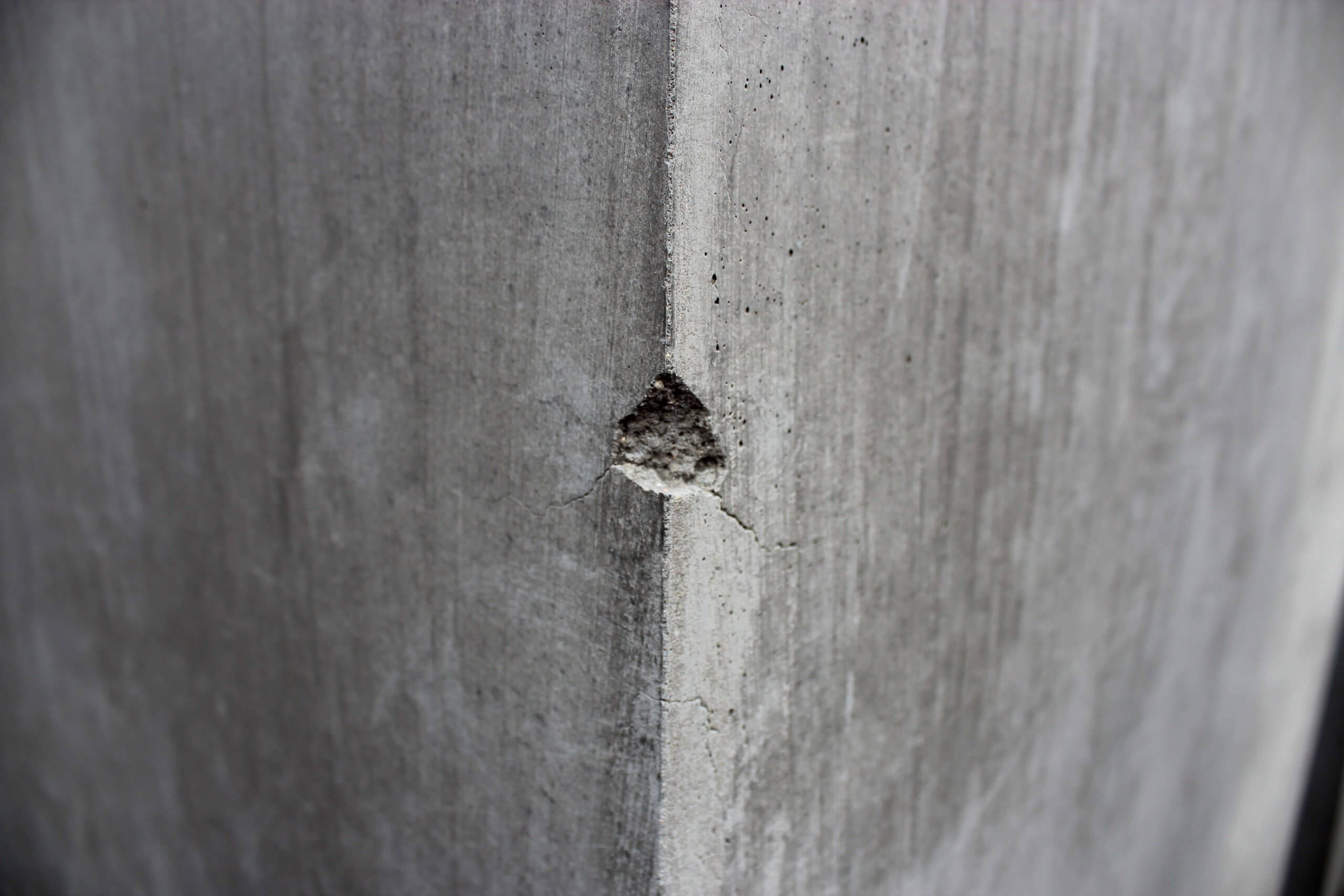Concrete Product FAQ: What Are Acceptable Concrete Cracks?

Many cracks that appear on concrete are completely harmless, however more severe cracks could impact the integrity of the concrete building structure. So, what are acceptable concrete cracks? And, how do you know when you need to take action?
Before we look at what are acceptable concrete cracks, let’s take a moment to look at the type of cracks that you may see appear in concrete structures, and what it is that causes them.
Types Of Concrete Cracks
Plastic Shrinkage: When concrete is in its plastic state it contains water. As the concrete starts to harden, the water begins to evaporate, leaving behind empty spaces where the concrete can start to ‘shrink’ or crack. Plastic shrinkage can also be made worse by hot weather.
Expansion: Heat has various effects on concrete, however one of its main impacts is causing concrete to expand. When concrete starts to expand, it can get weaker and start to cause cracks.
Heaving: If a concrete slab is lifted, by growing tree roots for example, where the concrete is not able to move with the ground, it can cause resistance which leads to cracking on the surface.
Settling: Concrete paving products can also be affected by a process known as settling. If a void is created in the ground underneath where concrete paving products have been laid (e.g where gaps are left from installing pipes or underground lines), this can cause cracking as the ground settles.
Overloading: Concrete is known for its strength, however it does still have its limits. So naturally, if it is exposed to an excessive amount of weight, this can cause cracks to form.
Premature Drying: If concrete is laid using a poor technique, or if low quality products are used, this can affect the drying process, which in turn can make the concrete product crack.
These are the main types of concrete cracks that you may come across, but what are acceptable concrete cracks? Let’s find out.
How To Assess The Severity Of Concrete Cracks
The severity of cracks will vary from one structure to another and from the perspective of different observers. For example, whilst an engineer or contractor might be able to identify that small cracks on a house do not jeopardise the integrity of the building, the tenant might find the visual appearance of these cracks to be unacceptable.
However, whilst there is no universal way of assessing severity, there are different indicators that can help us to assess what are acceptable concrete cracks and what are not. A concrete crack may be considered severe if it meets the following criteria:
- Demonstrates continuous movement / widening
- Allows moisture penetration
- Retains dirt, causing sanitation and maintenance problems
- Is highly visible to onlookers
- Is greater than 0.3mm in width
Structural Vs Non-Structural Cracks
When determining what are acceptable concrete cracks, it’s important to identify if the crack is structural or non-structural. Structural cracks can affect the strength and durability of concrete building structures making them more severe than non-structural ones. Structural cracks may be caused by faulty design or construction, whilst non-structural cracks are usually caused by induced stresses. Usually these do not affect the strength of the concrete, however they can look unsightly.
Can Concrete Cracks Be Prevented?
Whilst some cracks will naturally appear due to wear and tear and external influences, such as the weather, using high quality concrete products combined with correct technique will help to prevent serious concrete cracks occurring.
You can rely on the quality of Al Manaratain concrete products to create a safe construction project, with a durable and outstanding result. As an ISO 9001:2015 certified company, we have specialist quality control labs, where all our products and materials are continuously checked and monitored for quality. To find out more about the services we offer, please don’t hesitate to get in touch with us.
